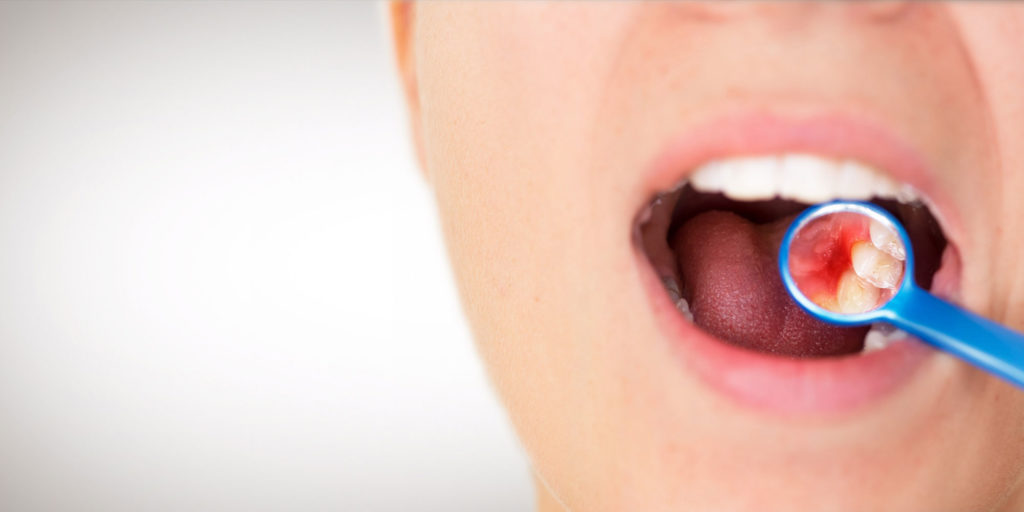Occasional bad breath after eating a spicy or garlicky meal is normal and can generally be combatted with breath mints or brushing your teeth. But if your bad breath is constant (halitosis) and accompanied by gums that bleed easily, a bad taste in your mouth, sensitive or loose teeth, and gum recession, the cause may be something more ominous—gum disease. This condition develops when plaque on the teeth from food debris is left to harden into tartar.
The bacteria released causes the gum tissues to become infected and inflamed, and eventually pull away from the teeth. Your chronic bad breath is a result of these bacteria breaking down proteins that release volatile sulfur compounds (VSCs) into your breath. Our team at [Practice Name] can treat your bad breath in [city], [state] by undergoing customized gum disease treatment to eliminate bacteria and infection and restore proper health to your mouth.
Our team at [Practice Name] can treat your bad breath in [city, state] by undergoing customized gum disease treatment to eliminate bacteria and infection and restore proper health to your mouth.

You may be wondering why there isn’t a simple fix for your chronic bad breath instead of needing specialized treatment. This is because gum disease is a dangerous progressive condition that will continue to worsen without interventional procedures. Your bad breath, though a cause of concern and embarrassment now, may become the least of your worries as the infection begins to degrade your gum tissue and bone. Eventually, untreated gum disease will result in tooth loss, compromise your immune system, and aggravate existing medical conditions such as diabetes, high blood pressure, and cardiovascular disease. Advanced cases of gum disease in [city], [state] have even been linked to heart attack and stroke!

Many treatments exist that eradicate bacteria and infection from your mouth and resolve halitosis. You may need one or more of these procedures combined to effectively treat your gum disease, which may also include antimicrobial medications and oral antibiotics to control bacteria. Common gum disease treatments include:
The first line of defense against gum disease is non-surgical scaling and root planing. During this procedure, plaque and tartar are removed from your teeth at and below the gumline (dental scaling) to eliminate bacteria from accumulating in the periodontal pockets. Next, the rough surfaces of the teeth are smoothed (root planing) to keep out bacteria and encourage healthy reattachment of the gums.
More advanced stages of gum disease that have damaged gum tissue and bone require surgical intervention. Osseous surgery involves folding back the gum tissues to gain access to the periodontal pockets and tooth roots. These areas are thoroughly cleaned of plaque and tartar, then disinfected. The damaged bone is smoothed and reshaped, and diseased gum tissue is trimmed away. The healthy gums are then sutured back around the teeth to reduce periodontal pocket depth.
After gum disease treatment, periodontal maintenance is required every 3-4 months to ensure the infection does not return. These appointments consist of a deep cleaning of the tooth surfaces and the periodontal pockets to remove bacteria and tartar buildup. The gums are then evaluated for signs of bleeding and infection and pocket depth is measured to ensure all oral structures are healthy.
I understand the information disclosed in this form may be subject to re-disclosure and may no longer be protected by HIPAA privacy regulations and the HITECH Act.